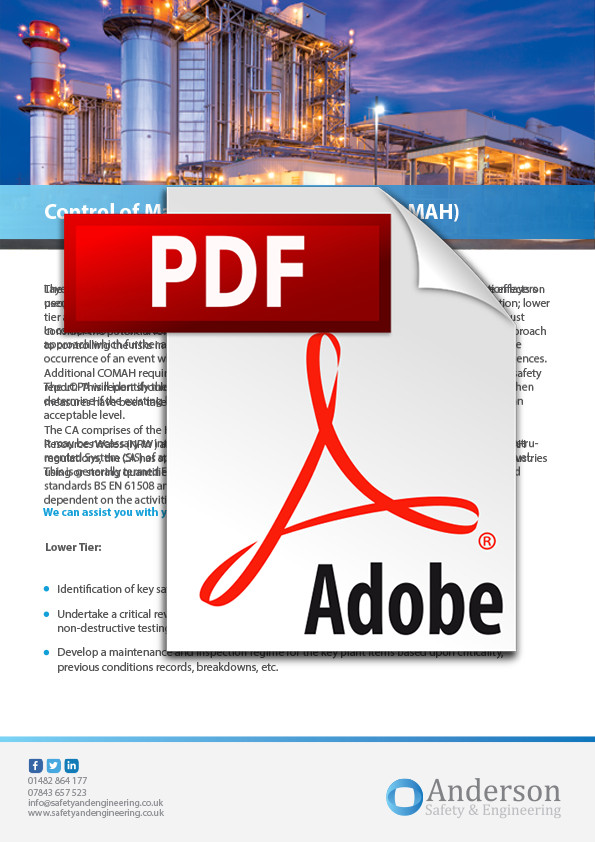COMAH
Control of Major Accident HazardsCOMAH Safety Case.
The COMAH regulations aim to prevent major accidents and implement measures to limit the effects on people and the environment if one were to occur. There are two categories of COMAH application; lower tier and upper tier. The simplest requirements apply to lower tier operators. These businesses must consider the potential for a major accident arising from their work activities and describe their approach to controlling the risks in a major accident prevention policy (MAPP).
Additional COMAH requirements apply to upper tier COMAH sites. Specifically, the inclusion of a safety report. This report should be submitted to the Competent Authority (CA) to demonstrate that all measures have been taken to prevent and mitigate major accident hazards.
The CA comprises of the Health and Safety Executive (HSE), the Environment Agency (EA), Natural Resources Wales (NRW) and the Scottish Environment Protection Agency (SEPA). Under the COMAH regulations, the CA has statutory responsibility to provide regulatory oversight of high-hazard industries using or storing quantities of dangerous substances that fall into the scope of the regulations.
We can assist you with your COMAH submission or ongoing COMAH compliance by:
Lower Tier:
- Identification of key safety and process critical plant items.
- Undertake a critical review of the key plant items to determine the condition, including non-destructive testing (NDT) to identify hidden defects.
- Develop a maintenance and inspection regime for the key plant items based upon criticality, previous conditions records, breakdowns, etc.
Upper Tier:
- Preparation of the COMAH Safety Report, including 5 yearly review.
MAPP (as above). - Description of foreseeable major accidents, likelihood and potential consequences.
- Assisting with the development of procedural measures to prevent major accident.
- Compiling and assessing information on the safety measures built into the plant.
- Detailing measures to limit the consequences of any major accident (e.g. ROSOV to HSG 244).
- Providing an Environmental assessment.
- Developing or supporting the preparation of the emergency plan for the site.

